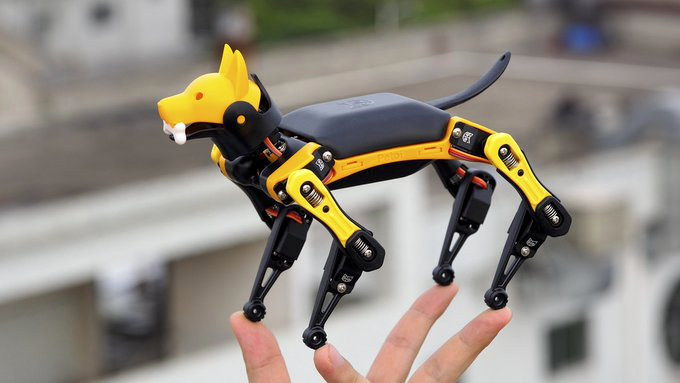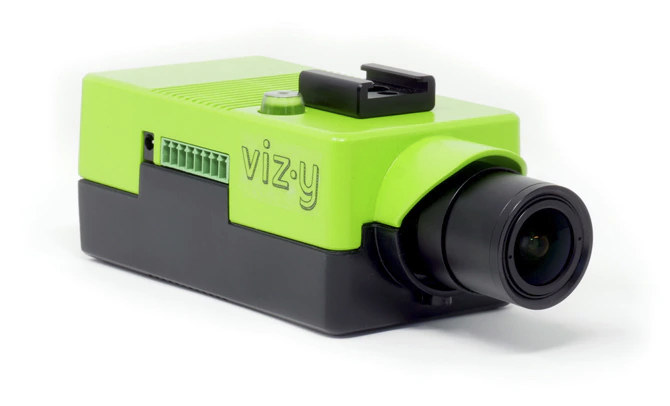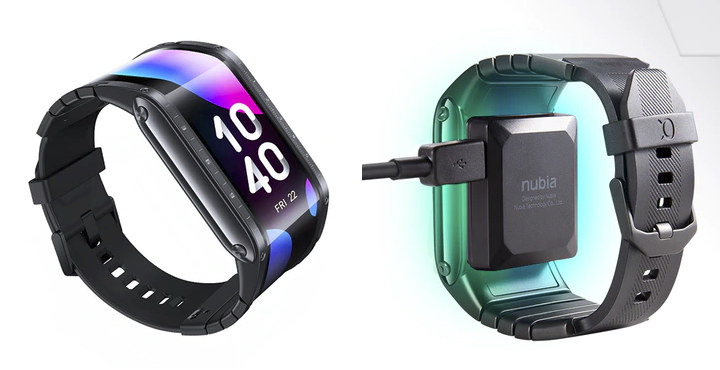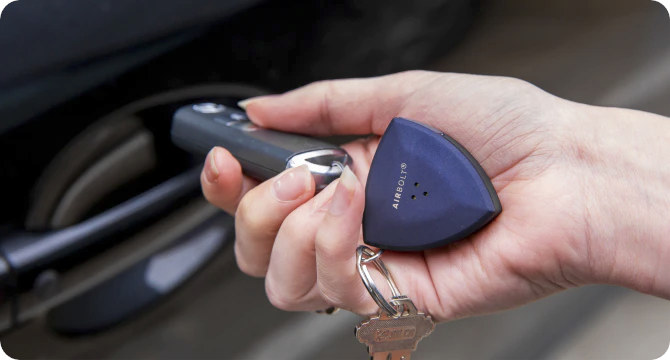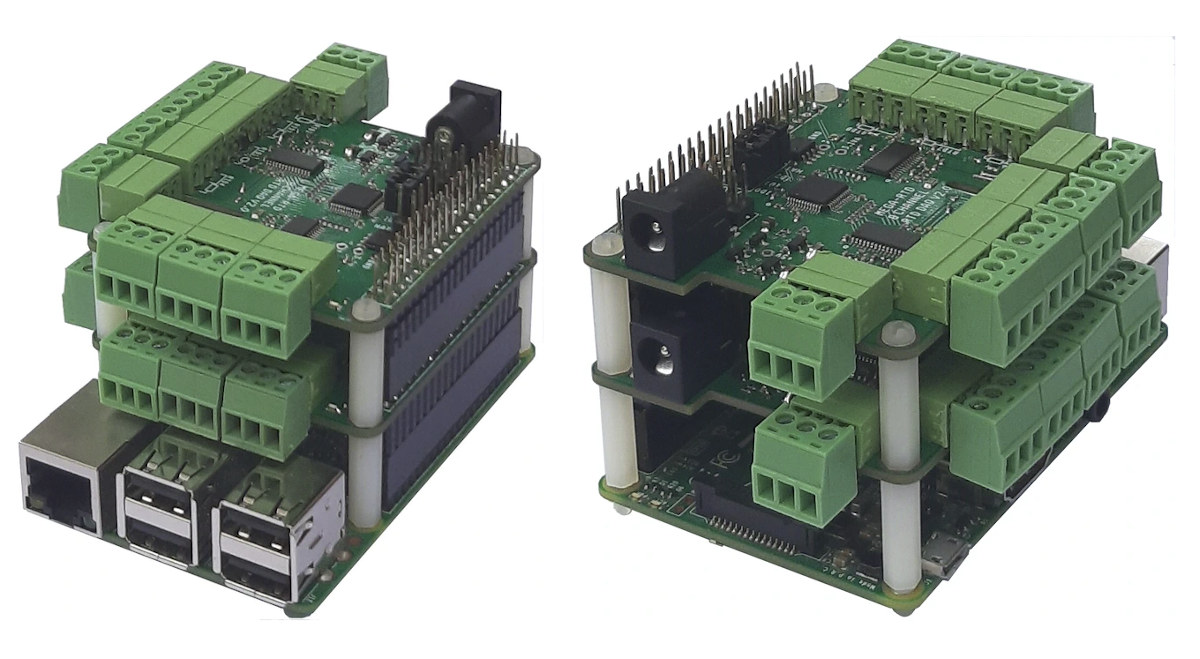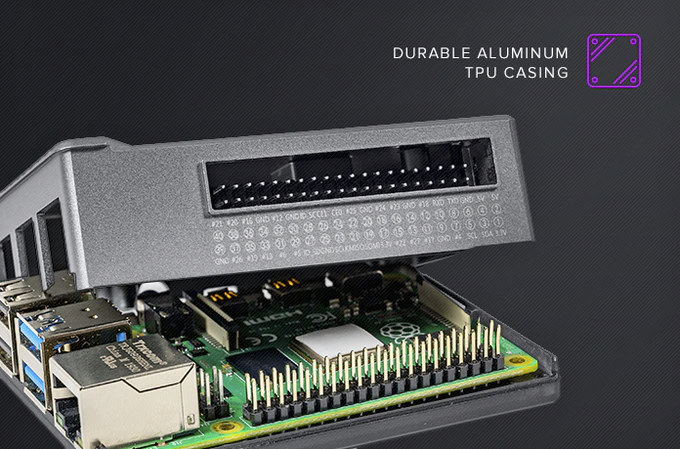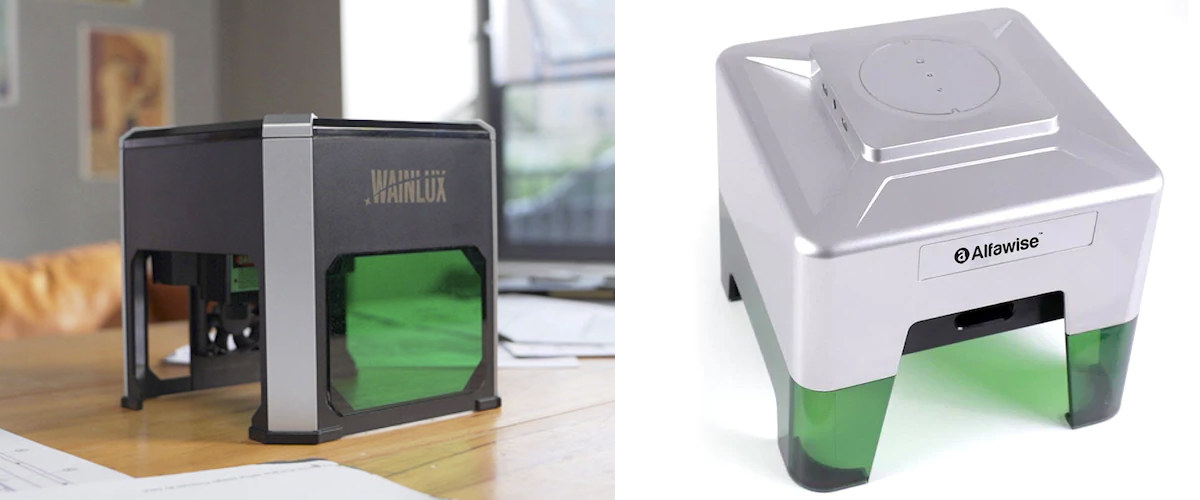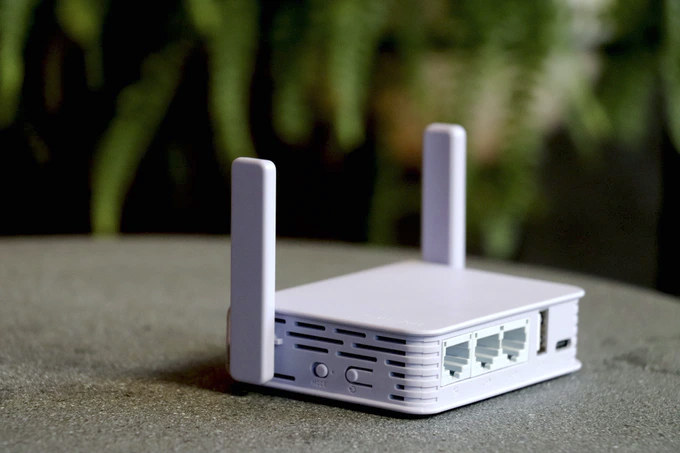You’ve probably already watched a video featuring Boston Dynamics Spot, a headless robot dog used in various industries including healthcare, public safety, construction, oil & gas, etc.. It could also be yours if you wanted a robotic pet dog at home, as long as you have $75,000 US to spare. Petoi Bittle looks eerily similar, but it’s much smaller as it fits in your palm, and could be yours for $225 on KickStarter as a kit to assemble yourself that you may get as soon as December. Bittle robot dog is designed for STEM education and can be programmed using the Arduino IDE, Python, or even Codecraft visual programming IDE. Bittle is comprised of 4 main hardware components: Plastic parts and fixtures – Body, four legs, head (which can be used to hold Arduino modules), springs, screws, etc… Actuators – 9x P1S servo with a controllable angle of 270 degrees, […]
Vizy AI camera runs Tensorflow, OpenCV, PyTorch on Raspberry Pi 4 (Crowdfunding)
We previously covered Charmed Labs PIXY2 computer vision camera based on an NXP LPC4330 microcontrollers that worked with Arduino, Raspberry Pi, and other development boards. The company is now back with a fully integrated more powerful solution with Vizy AI camera featuring a Raspberry Pi 4 SBC with up to 8GB RAM. Vizy AI camera key features and specifications: SBC – Raspberry Pi 4 with Broadcom BCM2711 quad-core Arm Cortex-72 processor, up to 8 GB RAM Camera – High-resolution camera based on Sony iMX477 12.3 MP sensor that can capture at over 300 frames/second and support both daytime and nighttime viewing; Both M12 and C/CS lenses are supported Video Output – 2x micro HDMI ports Audio – Analog stereo audio port Networking – Gigabit Ethernet, dual-band WiFi 5, and Bluetooth 5.0 USB – 2x USB 3.0 ports, 2x USB 2.0, 1x USB Type-C port from Raspberry Pi 4 (But not […]
Nubia Watch Comes with a 4-inch AMOLED Flexible Display (Crowdfunding)
We previously covered Nubia–α wearable “smartphone” in 2018. The device was basically a smartwatch with a long curved display, and at the time was at the prototype/design stage. There’s now a similar, but more refined Snapdragon Wear 2100 powered Nubia Watch with a 4.01-inch AMOLED flexible display that has recently launched on Kickstarter. It’s unclear whether it’s related to the older prototype, as the company claims to have conceptualized the watch in October 2019. Nubia Watch hardware specifications: SoC – Qualcomm Snapdragon Wear 2100 (8909Q) quad-core Cortex A7 processor with Adreno 304 GPU System Memory – 1GB RAM Storage – 8GB storage Display – 4.01-inch AMOLED flexible 2-point touchscreen display with 960 x 192 resolution covered with Schott glass Connectivity Bluetooth 4.1 GNSS – GPS, GLONASS, Beidou Sensors – Accelerometer & gyroscope, pressure sensor, heart-rate sensor, geomagnetic sensor Misc – Power button Battery – 425 mAh Lithium battery good for […]
Tiny, Waterproof AirBolt GPS Tracker Works with LTE-M and NB-IoT Cellular Networks (Crowdfunding)
We’ve previously covered small waterproof LTE Cat M1 and NB-IoT GPS trackers such as Mictrack MT825, but AirBolt GPS tracker offers another option and promises an even longer battery life of up to 12 months. At 37 x 34 x 11mm, AirBolt GPS may also be the world’s smallest waterproof GPS tracker on the market, as well as the lightest at just 21 grams, both of which are characteristics that make the tracker especially suitable for pets like cats and dogs, as well as track luggage, keys, bicycles, etc… AirBolt GPS tracker key features and specifications: SoC(s) Unnamed, but considering Nordic Semi is listed as a partner it should be nRF9160 SiP with Arm Cortex-M33 MCU core, 1024 KB flash, 256 KB SRAM, NB-IoT, LTE Cat M1, and GPS connectivity There’s also Bluetooth 5.1 so one of the nRF52 chips might also be included. Connectivity Bluetooth 5.1 with long-range and […]
MEGA-RTD Raspberry Pi HAT Offers up to 64 Resistance Temperature Detectors (Crowdfunding)
Sequent Microsystems like to make stackable Raspberry Pi HATs. After their stackable 4-relay board allowing for up to 32 relays controlled by a Raspberry Pi board, the company has now launched MEGA-RTD 8-channel RTD Raspberry Pi HAT enabling up to 64 resistance temperature detectors via 8x MEGA RTD board stacked on top of a Raspberry Pi board. If you haven’t heard about this type of temperature sensors, we wrote a post explaining the advantages and drawbacks of resistance temperature detectors last year. Basically, those temperature sensors contain a resistor that changes resistance value as their temperature changes, and support much wider temperature ranges than traditional temperature sensors such as DHT22 while keeping a <0.1°C accuracy. The price of the sensors themselves is similar to traditional sensors, but the total price is more expensive since they require extra hardware to measure the resistance/voltage value. MEGA-RTD key features and specifications: MCU – […]
Cooler Master Launches Pi Case 40 for Raspberry Pi 4 on Kickstarter
Cooler Master, known for its PC cooling solutions and cases, has now launched a Raspberry Pi 4 case on Kickstarter. Cooler Master Pi Case 40 has already raised over $120,000 within a few hours, with the $27 Raspberry Pi 4 enclosure blasting pass the $10,000 funding target in about one hour. The aluminum case is unsurprisingly a fanless design and exposes a power button to easily power on and off the system without having to remove the power source from the Raspberry Pi. The button also happens to be reconfigurable to any other function so you can run whatever script you please after pressing the button. The neat part of the design is that GPIOs are re-routed to the side of the case with corresponding IO markings on the enclosure. The case also comes with a slit to allow both display and camera cables to be routed outside the enclosure, […]
Wainlux K6 & Alfawise C50 Mini Laser Engravers Offered for $130 and Up
A few days ago I saw Wainlux K6 “most compact, powerful and simple-to-use” laser engraver on Kickstarter for about $159. I did not think too much of it at the time, but this morning I thought it already showed up for pre-order on GearBest for $129.99 as Alfawise C50. But I was mistaken, as both products are different, albeit sharing some of the same attributes. Nevertheless, this brought back my curiosity about these types of devices, especially with Wainlux K6 having already managed to raise over $200,000 from close to 1,400 backers so far. So let’s look at both. Wainlux K6 Laser Engraver Key features and specifications: Laser Source – OSRAM Semiconductor blue color laser Laser Power – Up to 3,000 mW, 100 adjustable levels of power Engraving area – 8 x 8 cm Routing Speed – 1500 mm/min maximum Resolution – 508 dpi adjustable Lifetime Estimation – 10,000 hours […]
Brume-W Pocket-Sized Wireless Gateway Runs OpenWrt or Ubuntu (Crowdfunding)
GL.iNet Brume-W (GL-MV1000W) is a “pocket-sized wireless gateway for edge computing” that supports high-speed VPN up to 280Mbps with WireGuard, AdGuard ad-blocking software (AdGuard), and Tor. The device features three Gigabit Ethernet ports and built-in 2.4 GHz WiFi 4 connectivity, but it also supports Alfa AWUS036AC and AWUS036ACS USB WiFf USB dongles for users wanting dual-band WiFi 5 (AC) networking. The router ships with OpenWrt pre-installed, but also supports Ubuntu. Brume-W specifications: SoC – Marvell ARMADA 88F3720 (aka ARMADA 3720) dual-core Cortex-A53 processor @ 1.0 GHz with packet processor/network accelerator System Memory – 1GB DDR4 Storage – 16MB NOR flash and 8GB eMMC flash, MicroSD card slot up to 256GB Connectivity 3x Gigabit Ethernet ports (1x WAN + 2x LAN) Built-in 2.4 GHz 802.11b/g/n WiFi 4 up to 300 Mbps with external WiFi antennas Support for external 802.11ac WiFI 5 USB dongles USB – 1x USB host port, 1x USB-C […]


